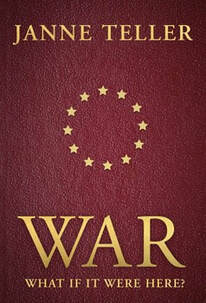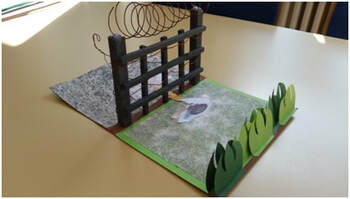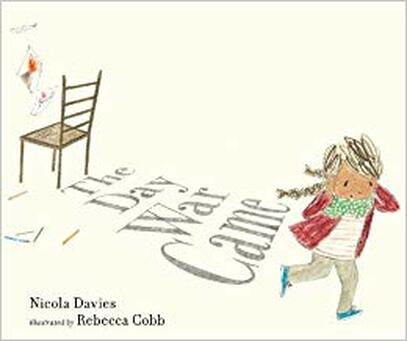© Global Education Derby 2020. All rights reserved. The In Others' Shoes resources are copyright but may be reproduced by any method without fee for teaching purposes.
For copyright in any other circumstances, for re-use in other publications or for translation or adaptation, written permission must be obtained from Global Education Derby: http://www.globaleducationderby.org.uk/contact.html
Global Education Derby is a Registered Charity No. 1049591 and a Company Limited by Guarantee registered in England & Wales No. 2642026.
For copyright in any other circumstances, for re-use in other publications or for translation or adaptation, written permission must be obtained from Global Education Derby: http://www.globaleducationderby.org.uk/contact.html
Global Education Derby is a Registered Charity No. 1049591 and a Company Limited by Guarantee registered in England & Wales No. 2642026.
|
War ...
what if it happened here? |
| ||||||
Title of Lesson |
Time Required |
Age Range |
Resources required |
War ... what if it happened here? |
10 lessons |
11-14 |
Book "War", by Janne Teller (available on Amazon UK: https://www.amazon.co.uk/War-Janne-Teller/dp/1471161471) |
Lesson Objective |
Knowledge and Understanding (Global Theme covered) |
Global Skills covered |
Global Values and Attitudes covered |
To sensitize the students to the topic of war and refugees and to help students to understand the concepts of peace and conflict |
Peace and Conflict Human Rights |
Critical and creative thinking Cooperation & conflict resolution Empathy |
Commitment to social justice and equity Respect for people and human rights |
-
Introduction
-
Main Activity
-
Plenary
-
What were the Outcomes?
<
>
Students worked on the subject of war and refugees over a series of lessons.
The lessons involved a combination of drama games, poetry, creative art work and discussion using the book War by Janne Teller as a stimulus.
Another book that could serve a similar purpose is "The Day War Came" by Nicola Davies.
Class activities are followed by a reflective phase where students can process and record their own responses through poetry, art work, dance or music. This phase can be followed with students planning to take action to promote positive relationships, cooperation and deeper understanding within the school or local community.
The lessons involved a combination of drama games, poetry, creative art work and discussion using the book War by Janne Teller as a stimulus.
Another book that could serve a similar purpose is "The Day War Came" by Nicola Davies.
Class activities are followed by a reflective phase where students can process and record their own responses through poetry, art work, dance or music. This phase can be followed with students planning to take action to promote positive relationships, cooperation and deeper understanding within the school or local community.
Icebreaker games were used to sensitise the students to the concept of war and it's impact on people's lives.
"Friend and Enemy"
Participants move around the room at their own pace, filling it out evenly. The task is for participants to choose two players, without them noticing that they are being tracked, following verbal instruction from the teacher/game master.
Firstly - choose a person to get as close to as possible without them noticing (friend)
Secondly - choose another person to get as far away from as possible (enemy)
Thirdly - Combine staying close to your friend and away from your enemy at the same time.
It usually creates a dynamic, cyclone -like movement of the group.
Can be repeated changing friends and enemies.
"Free seat in getaway car"
All participants sit on a chair, freely distributed around the room. Only one chair is free.
A participant stands at the other end of the room and attempts to reach the free chair at slow pace/on tip toe symbolising that they are carrying luggage.
The group must prevent the searching person reaching a seat by moving seats . They cannot return to the same seat or return to a previous seat during the game. Players must move as soon as they stand up from their chair. If the searching participant succeeds in gaining a seat, another player takes over seeking a place in the getaway car.
"Escape"
The participants imagine that their chairs are trucks on which they have to drive through the desert. They are on the road for a long time. It bumps terribly and everyone has to be careful that nobody falls down or get left behind.
The game play is similar to "The Journey to Jerusalem" or "Musical Chairs" with a double row of chairs down the middle of the room. One chair for each participant.
As the music plays participants move around the chairs. When it stops they must be on the chairs with no part of the body touching the ground. After each round a chair is removed and the participants must help each other to get on the remaining chairs and stay on them. The game is about keeping the whole group together and each person can be given a turn to lead and instruct the group forward. The game is over when the participants can no longer "save" everyone on the chairs.
After reading sections of the book students can generation their own questions for discussion and/or explore questions introduced by the teacher/ current events.
Probing questions such as Which words/terms make you think about war? Do you know countries that are currently at war? What worries scare you? Where would you flee? What are the prejudices people can hold about refugees? What would you take if you had to flee with only had a small backpack? can be used to assess level of understanding, help students to connect global events with their own lives and locality, and clarify ideas for further research.
Students can write acrostic poems, and use creative approaches to record their personal reflections on the project activities.
"Friend and Enemy"
Participants move around the room at their own pace, filling it out evenly. The task is for participants to choose two players, without them noticing that they are being tracked, following verbal instruction from the teacher/game master.
Firstly - choose a person to get as close to as possible without them noticing (friend)
Secondly - choose another person to get as far away from as possible (enemy)
Thirdly - Combine staying close to your friend and away from your enemy at the same time.
It usually creates a dynamic, cyclone -like movement of the group.
Can be repeated changing friends and enemies.
"Free seat in getaway car"
All participants sit on a chair, freely distributed around the room. Only one chair is free.
A participant stands at the other end of the room and attempts to reach the free chair at slow pace/on tip toe symbolising that they are carrying luggage.
The group must prevent the searching person reaching a seat by moving seats . They cannot return to the same seat or return to a previous seat during the game. Players must move as soon as they stand up from their chair. If the searching participant succeeds in gaining a seat, another player takes over seeking a place in the getaway car.
"Escape"
The participants imagine that their chairs are trucks on which they have to drive through the desert. They are on the road for a long time. It bumps terribly and everyone has to be careful that nobody falls down or get left behind.
The game play is similar to "The Journey to Jerusalem" or "Musical Chairs" with a double row of chairs down the middle of the room. One chair for each participant.
As the music plays participants move around the chairs. When it stops they must be on the chairs with no part of the body touching the ground. After each round a chair is removed and the participants must help each other to get on the remaining chairs and stay on them. The game is about keeping the whole group together and each person can be given a turn to lead and instruct the group forward. The game is over when the participants can no longer "save" everyone on the chairs.
After reading sections of the book students can generation their own questions for discussion and/or explore questions introduced by the teacher/ current events.
Probing questions such as Which words/terms make you think about war? Do you know countries that are currently at war? What worries scare you? Where would you flee? What are the prejudices people can hold about refugees? What would you take if you had to flee with only had a small backpack? can be used to assess level of understanding, help students to connect global events with their own lives and locality, and clarify ideas for further research.
Students can write acrostic poems, and use creative approaches to record their personal reflections on the project activities.
Students can share their work with their peers describing how their perceptions of war, refugees etc have developed through project activities and discussion.
Are there actions students can take locally to promote understanding and cooperation between different groups that can misunderstand each other due to different faiths, age, ethnicity, culture, economic status etc
Are there actions students can take locally to promote understanding and cooperation between different groups that can misunderstand each other due to different faiths, age, ethnicity, culture, economic status etc
Students were highly motivated in the subjects of war and migration. They developed a sense of empathy concerning the topic and crisis that result in people being displaced. Students were highly creative in the reflection phase. Students gained a deeper understanding of the causes and consequences of conflict. They began to consider how conflict can be avoided or resolved in everyday life.
Lesson submitted by Maria Turner & Anke Jaguttis, Germany







